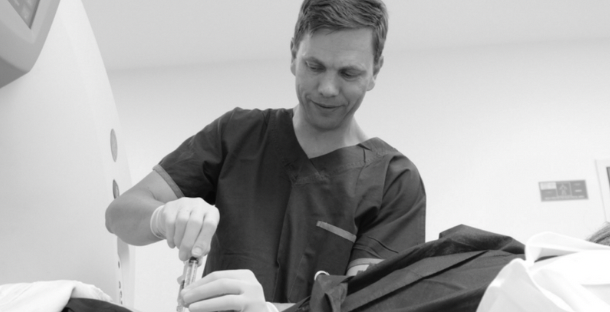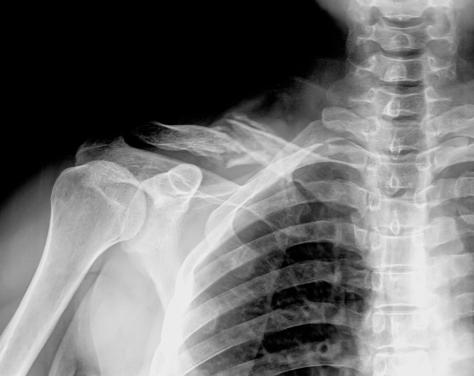NEUROMODULATION
Neuromodulation is a proven therapy to manage chronic pain and improve quality of life. It involves electrical pulses to the spinal cord or peripheral nerves to change the transmission of pain signals to the brain. Implantable neuromodulation processes include spinal cord stimulation (SCS), peripheral nerve stimulation (PNS) and dorsal root ganglion (DRG). These leads are connected to implantable pulse generators known as IPGs.
NEUROMODULATION IS A TWO-STEP PROCESS
Step 1: Trial Stimulation
An important feature of neuromodulation is the ability to trial the therapy, enabling the patient to experience the process and get an indication of its capacity to reduce pain. The trial involves a minor operation where leads are placed via an epidural Tuohy needle and connected to a temporary external stimulator. Leads are easily removed at the end of a trial.
Step 2: Implantation of Permanent System
If the trial is successful, the permanent procedure requires small incisions to implant the leads. A subcutaneous pocket is created in the abdomen or buttock area. The leads are connected to the IPG and secured in the pocket. The patient can control the therapy with a wireless programmer.
PRECAUTIONS FOR NEUROMODULATION
Extra care will be required in the presence of cardiac pacemaker or the use of other implantable electric devices. Following the unit's insertion, patients will be made aware of precautions such as diathermy, which are required with outside electrical equipment.
Other external device with large magnets may affect the unit, as such, care should be taken near magnetic fields such as arc welding equipment. If a stimulation system is implanted, you will be able to bypass security gates with a patient identification card. If requiring an MRI machine, please speak to your physician as not all devices are compatible with the magnets form the MRI scanner. It is also suggested to turn off the stimulator when you are operating a motor vehicle or other heavy equipment.
Spinal Cord Stimulation (SCS): where leads are placed in the epidural space adjacent to the sensory pathways
Peripheral Nerve Stimulation (PNS): where leads are placed in the region of a peripheral nerve
Dorsal root ganglion (DRG): where leads are placed near the dorsal root ganglion
SPINAL CORD STIMULATION
What is it?
Spinal cord stimulation involves delivering a low voltage electrical impulse to the spinal cord to block the sensation of pain. The stimulation is provided by way of two small wires that are inserted into the spinal canal under x-ray control. The wires connect to a lead that runs around the side of the trunk to the stimulator unit itself. The unit is implanted into the fatty layer of the abdomen, deep to the skin. It can be programmed to deliver intermittent or continuous impulses to the spinal cord, which block the usual sensations of pain.
What is SCD used for?
It is a treatment generally reserved for severe intractable lower back and leg pains that have not responded to the usual conservative treatment.
Side effects and complications
SCS is generally a well-tolerated procedure with very little long term side effects. However, the following adverse reactions have been recorded.
Technical problems related to the implantation may occur, leading to leakage of spinal cord fluid, possible spinal nerve damage, or excessive bleeding at the site of surgery either anteriorly or posteriorly around the spinal cord
Infection is quite uncommon, but when it does occur it may involve the spinal canal. Symptoms usually involve fever, sweats, headaches, and increasing pain. Infection from any foreign material in the body usually requires that it be removed and a course of antibiotics is prescribed.
In the longer term, malfunction of the hardware or loss of pain relief is possible. Loss of pain relief is either due to the body developing a tolerance to the stimulation or the wires moving and needing to be re-sited. When wires have moved, patients may experience uncomfortable jolting or sensations of electric shocks that occur with stimulation. Repositioning the wires usually rectifies this problem.
PERIPHERAL NERVE STIMULATIONS
What is it?
Peripheral nerve stimulation is increasingly recognised as a safe, minimally invasive and easily reversible treatment for a variety of chronic pain conditions. The exact mechanism by which PNS works is unknown, but the main theory is that the electrical current and magnetic fields from the stimulator block the firing of nociceptive (pain) fibres in the area. Even a widespread area of pain can be generated from a relatively small area of nociceptive fibres.
What is SCD used for?
PNS is a treatment options for anyone with singular or multiple areas of relatively circumscribed pain. It can also be used for widespread areas of pain if there is a more significant central area. Significant success has been reported for:
Low back pain - particularly in patients with disabling back pain despite surgery or following other failed treatments such as RF neurotomy.
Headache:
Particularly occipital and high cervical spine eg. upper neck and and back of head
Frontal (eye and temple) including cluster headache and migraine
In association with fibromyalgia
Trunk - particularly in narrow bands of pain eg. along old scars
Groin - particularly for patients who have ongoing pain after hernia repairs
Other focal areas of pain eg. following shingles
Side effects and complications
As with any implantable device, the main issue is infection, although this occurs less than 5% of the time and is not as serious or dangerous as it is for SCS and can usually be controlled with antibiotics. If not, the system can be removed. PNS is considered to be safer than SCS in terms of neurological risk of complication. As anaesthetic agents are used, there is an exceedingly rare risk of serious complications, including brain injury and death.
Similar to SCS, leads can move and require repositioning, failing to provide stimulation or even causing unwanted spasms and irritation. Occasionally leads can perforate the skin, as they are placed just under the skin's surface. This is rare and requires temporary removal of the lead.
The site can at times be tender to touch or can become swollen. The battery can fail earlier than predicted and need to be removed and replaced.
THE DORSAL ROOT GANGALION (DRG) STIMULATION
What is it?
Dorsal root ganglion is a form of neuromodulation, targeting the dorsal root ganglion. The DRG plays a key role in modulating sensory input and is responsible for generating ectopic firing, increasing neuropathic pain after injury. Stimulating of the DRG can interrupt this process, preventing pain signals from traveling to the brain.
What is SCD used for?
DRG has been found to be beneficial to patients who suffer from:
Complex regional pain syndrome (CRPS)
Post-surgical groin pain (eg. hernia repair)
Post-surgical knee pain (eg. knee replacement)
Post-surgical hip pain (eg. total hip joint replacement)
Post-surgical foot and ankle pain
Phantom limb pain (following amputation)
KEY MANAGEMENT POINTS TO KNOW
Recovery times vary among patients. The stimulation therapy will start to work within the first week following lead placement. The wounds will take one to two weeks to heal. Any discomfort from the stimulator placement will decrease over a two to three month period.
The patient must not shower or get incisions wet throughout the entire duration of the trial or up to seven days post permanent implant.
Patients can have all forms of imaging investigation except MRI's at this time.
Patients should avoid twisting, bending, stretching, or heavy lifting anything heavier than five kilograms until the leads have healed in place.
MORE ABOUT THE PAIN CHART
You should rate your pain between 0 and 10 before your injection, and after for 6 hours, firstly in 30 minute intervals and then hourly intervals. Ratings should be conducted in terms of movements and how you feel doing the things that most aggravate the pain.





